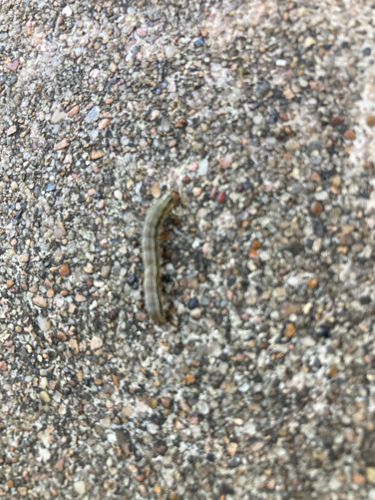Inchworm (Geometer Moth Larva)
Scientific Name: Various species within the family Geometridae
Order & Family: Lepidoptera, Geometridae
Size: Typically 1-3 cm (0.4-1.2 inches) in length, depending on species and developmental stage.

Natural Habitat
Gardens, forests, fields, and any areas with abundant host plants (trees, shrubs, herbaceous plants).
Diet & Feeding
Herbivorous, primarily feeding on leaves, buds, and flowers of various plants, including trees, shrubs, and garden vegetables. Some species are highly specialized feeders.
Behavior Patterns
Inchworms are known for their distinctive 'looping' or 'measuring' locomotion, where they draw their hind prolegs up to their front legs before extending forward. This is due to the reduction or absence of prolegs in the middle of their bodies. They often mimic twigs or stems, standing rigidly to avoid predators (cryptic behavior). Many species overwinter as eggs or pupae, with larvae active during warmer months.
Risks & Benefits
Potential risks include being agricultural or horticultural pests, as large populations can defoliate plants and trees, causing damage to crops or ornamental plants. Benefits include serving as a food source for birds and other insectivores, contributing to the food web. They are also part of the natural ecosystem, and their adult moth forms play a role in pollination.
Identified on: 9/5/2025